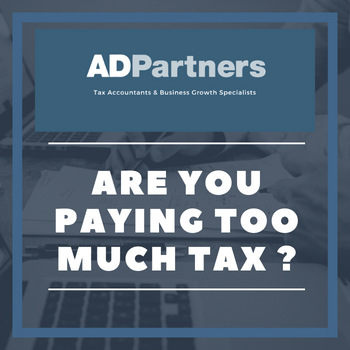Human nature may suggest the answer is “yes”, but do we really know?
The answer lays in the structure of your business.
The benefits of having the right structure are that it saves you money by reducing the amount of tax you need to pay; it gives you flexibility when it comes to distributing profits and adding or removing partners; it enables you to grow without any adverse effects; and it gives you peace of mind, knowing that you are set up not only for today, but for well into the future.
If you don’t have the right structure, on the other hand, it could cost you your business.
When it comes to structuring your business to minimise tax, there are two areas to consider – your business’s taxable income and any potential for Capital Gains Tax (CGT).
If your business derives a taxable income, then minimising income tax will be an important factor when choosing your business structure.
You want to ensure that any profit generated by your business is taxed at the lowest possible rate. This can be done by ensuring that individual tax rates and tax-free thresholds are taken advantage of, and that any additional income is taxed at a corporate rate.
At the time of writing, income tax rates in Australia are as follows:
Taxable income / Tax on this income
$0–$18,200 / Nil
$18,201–$45,000 / 19c for each $1 over $18,200
$45,000 –$120,000 / $5,092 plus 32.5c for each $1 over $45,000
$120,001–$180,000 / $29,467 plus 37c for each $1 over $120,000
$180,001 and over / $51,667 plus 45c for every $1 over $180,000
Note: the above rates do not include the Medicare levy of 2%.
Different structures have different treatments of tax. If you are a sole trader, all profit earned by the business will be counted towards your personal income and taxed at the rates above. The same goes for partnerships, though the profit would be divided between the partners.
Profits generated by companies, on the other hand, are taxed at a rate of either 25 per cent or 30 per cent, depending on their aggregated turnover.
Using the figures above, the percentage of income tax you pay increases as your income does, reaching a total of 30 per cent at $196,000 in income (total tax paid of $58,867 ÷ total income of $196,000 = 30%). After this, the percentage increases with every additional dollar earned. This means businesses making over $196,000 in profit can pay a lower percentage of tax than they would have otherwise if they use a company structure. You can also gain tax benefits if your income is less than $196,000 where you could pay yourself $120,000 as a salary or wage and leave $76,000 of income in the company to pay tax at the corporate rate. In this example, you would save either 7 or 12 per cent tax, depending on your aggregated turnover.
When it comes to trusts, the income is distributed to beneficiaries and is then recorded as a part of their personal taxable income. As you can choose how much income goes to each beneficiary, you can maximise your tax benefit by paying more income to beneficiaries who are in lower income brackets, and benefit from lower tax rates.
Finally, SMSFs pay a flat tax rate of 15 per cent on the net earnings, including concessional contributions. This structure is the most tax efficient, however, it is also the structure with the most restrictions in regard to operating a business, so please seek advice if contemplating an SMSF.
Note that the government is continually putting in place measures to reduce the tax benefits of certain structures depending on the type of business you run and how you run that business. For example, contractors in the building industry are now facing the likelihood that the ATO will not grant them an individual ABN if the ATO believes that they are effectively operating as an employee contracting to one employer for only their labour services. Instead, a business operation in the eyes of the ATO is one where you contract to two or more employers and when you supply your own plant and equipment and/or materials.
The second area to consider when it comes to tax minimisation is Capital Gains Tax (CGT).
If your business derives income that is considered capital, then planning to minimise CGT is important.
Income that would be considered capital is the profit made when you sell an asset. Under that simple definition, property development would be considered capital. Unfortunately, it is not that simple, as the ATO has introduced significant legislation in this area. For example, if you undergo a property development and your intention is to make a profit by selling the developed properties at completion, the ATO would likely consider such an activity as income, not capital.
So, what might they consider capital?
If we take the example above but change the intention from selling the developed properties at completion to renting the developed properties for a period of time before, then selling them at some time in the future, this scenario would be considered capital at the time of sale of the rental properties.
The ATO provides a tax incentive for you to hold on to assets for a period of at least 12 months, where they will give you a 50 per cent CGT discount on the profit on the sale of the properties.
The other main activity that would be considered capital, and one that is generally not even considered when setting up a structure, is the sale of your business. If your intention is to build value in your business and sell it for a significant profit at some point in the future, then CGT should be a major consideration.
Structuring your business so that you can get access to both the CGT 50 per cent discount and various small business concessions is important if you plan to generate income that is considered capital.
So which structure should you choose? The only structure which is not entitled to the 50 per cent CGT discount is a company. Therefore, all of the other structures are valid options for accessing the CGT discount along with other small business concessions.
However, while a company cannot access the CGT discount, there is a loophole. If you operate your business in a company structure you can benefit from the CGT discount if you sell your shares in the company, rather than selling the business and retaining the company. The shareholder then becomes the seller and if the shareholder is you (individual) or a trust you are connected with, then you can access the CGT discount. You need to be aware, though, that a purchaser may not wish to acquire the shares in your company as it may not suit their requirements.
You may also minimise CGT by conducting your business through an existing entity with available capital losses. For example, if you have an existing trust that has capital losses from a previous investment that was sold at a loss, this can be offset against a future capital gain, thus reducing the total profit and the tax you’ll need to pay as a result.
It is important to also consider the other taxes that affect your business, including payroll tax, stamp duty and land tax. There are also other costs such as workers’ compensation, superannuation guarantee contributions and leave entitlements.
It can be a minefield and you need to make sure you don’t take the wrong step.
Are you in need of sound business advice? Do you clearly understand tax law and compliance? Contact us for a free 30 min strategy consultation. Click here to get started
Let us review your business requirements to help you grow your business and achieve your business goals – big and small.





